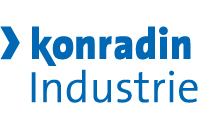Two new pump sizes, new connection types, a new material and 10% more efficiency are the results of the R&D work of the Danish pump manufacturer Grundfos. A further benefit of the vertical, multi-stage, high-pressure circulating pumps is a microfrequency converter that integrates intelligent measurement technology directly into the pump.
Denise Fröhlich
Anzeige
In einer Ära, in der die Chemieindustrie mit den Herausforderungen des Klimawandels und der Notwendigkeit einer nachhaltigen Entwicklung konfrontiert ist...
Chlorides in the media, acids, complicated maintenance and a high energy consumption will no longer pose problems for pump users. In its constant quest to find new areas of application, the Danish manufacturer conducts research into different ways of optimising its pumps with special modifications, accessories and designs. All the hard work has been worth it. The vertical, multi-stage, high-pressure circulating pumps in the CR series have now been completely redesigned, and the series has been extended to include two new pump sizes (CR 45 and CR 90) as well as new connection types. As a result, the pumps offer a wider performance range (discharge flows of up to 120 m3/h and a maximum motor output of 45 kW). The eight basic models are available in 130 different pump sizes and, with their PJE or clamp couplings, welded, threaded or screw-type connectors and DIN flanges, offer endless possible combinations. What is more, titanium is now also available as an alternative material and efficiency has been increased by around 10% to 80%.
Greater pump efficiency reduces operating costs
“In order to achieve this, we incorporated 30 design improvements“, explains Thies Ehlers, Product Manager for industrial products at Grundfos GmbH, Wahlstedt. The benefits for the user are as follows:
• lower energy consump-tion,
• lower running costs,
• the same motors offering greater output.
A further consequence is that the necessary inlet pressure was reduced thanks to the low NPSH value.
The fully laser-welded impellers and guide vanes contribute a great deal towards improving the pump’s efficiency. The pump chambers are fitted with a fixed stainless-steel neck ring and a floating PTFE ring, thus ensuring low gap leakages. The neck ring holder also retains solids, with the result that they no longer rotate in the chamber and the wear ring can be easily replaced. Ehlers emphasises the resulting advantage: “It is no longer necessary for the user to replace the entire impeller“.
„We have been able to meet the requirements of our customers, i.e. with regard to good documentation, dry-running properties, self-ventilation and easy servicing with standard tools“, the Product Manager is pleased to note. This is made possible by cartridge seals, whose settings and pretensioning are taken care of by means of spacers, meaning that the CR pumps remain easy to operate even after assembly. The mechanical shaft seal can be replaced and subsequently ad-justed without the need to disassemble the pump or remove the motor, and no special tools are necessary. Furthermore, thanks to their inline construction the circulating pumps can be incorporated into existing ducts.
Corrosion-resistant to acids and chlorides
In addition to GG-20, GGG-50 and nickel chromium steel, titanium is now also used as a pump material (in the CRT series), making the components resistant to sea and salt water (chlorides) as well as to most acids. Ole Gerlich, Product Manager for industrial pumps at Grundfos A/S, Bjerringbro, Denmark, explains: “Only bronze and titanium pumps can withstand long periods in sea or salt water. Stainless steel lasts for about one year. Titanium is light and only around twice as expensive as stainless steel, while bronze will cost the user around three times as much.“ All parts which come into contact with the pumped media, i.e. the impeller, the shaft and the pump housing, are made of titanium, which forms a good passive layer. With bronze there is the problem of ions passing into the media, thereby causing galvanic corrosion. „In a thermal spring in Böblingen, Germany, the stainless steel pumps which had been used previously had to be replaced roughly every six months, whereas the titanium pump which is now in use there has been running for three years already without any problems“, Gerlich explains. This is additionally helped by the fact that the new material makes the pumps more resistant to abrasion. They also feature a high heat transfer coefficient and are 80% lighter than their stainless steel counterparts.
“We are not the first company to manufacture titanium pumps, but we are the first to achieve large-batch production“, sums up the Product Manager. An important contributory factor is that the company is able to deep-draw the pump components. Ole Gerlich the additional cost benefits: „Cast titanium pumps would be prohibitively expensive“. After modifying the tools, the manufacturer produces the CRT pumps on the same production lines as the standard CR units.
Output adjusted automatically to match demand
Reducing energy consumption has an important role to play in pump technology too. Controllable pumps adapt their output automatically to meet current flow requirements. Only as much electricity as the pump needs to cope with the current flow-rate is actually used – and no more. „Only in exceptional cases do pumps need to be operated at maximum output “, explains Ivan Knudsen, Product Business Manager responsible for drive units, regulators and systems at Grundfos A/S, Bjerringbro/Denmark.
For its CR circulating pumps, the Danish supplier manufactures variable-speed motors with an integrated PID controller up to 7.5 kW. In the near future, motors for up to 22 kW should be available. Grundfos manufactures the components needed for pump speed regulation itself, and is therefore able to offer a complete, pump-specific solution. With size 32 and above, the head and base parts of the pumps contain bore holes ready to accommodate sensors for temperature or pressure monitoring as well as for monitoring and controlling the differential pressure.
Electronic pumps are just as easy to install as standard pumps without speed regulation. All the user needs to do is to connect the motor to the power supply, set the target value and switch on the pump. All the internal connections and settings are completed before the pump leaves the factory. In addition, energy consumption can be reduced due to the fact that the pumps are regulated to match the requirements of the current application. „Energy savings of up to 50 percent are possible“, is how Knudson describes the clear advantages. The company’s own R100 remote control unit, an operating panel, external control signals or an RS 485 bus interface can be installed as user interfaces. The electronic pumps can be used, for example, as circulating pumps for cooled water, cooling towers or cooling circuits in industry, as variable-speed contact pumps for slightly aggressive media and for water supply, booster or central heating systems. They are available with either single or three-phase motors. “With a payback period of one to two years, the additional costs of these pumps can be viewed as a sound investment “, believes Ivan Knudson.
Grundfos
Fax: ++49/4554/98 71 17
Further information cpp-223
Slight growth in turnover despite difficult market conditions
Despite the turmoil on the world’s stock exchanges, uncertainties with regard to some of the major trading currencies and conflicts over collectively agreed wage settlements in Denmark, 1998 did not prove to be a disastrous year for Grundfos. However, after five years of high growth rates averaging around 10%, the boom came to a standstill. At 1.98 billion DM, the overall turnover of the Grundfos Group was around 4% above the previous year’s figure of approximately 1.9 billion DM, though the company achieved around 80 million DM less than planned. In particular, those countries most seriously affected by the Asian crisis, such as Indonesia, Korea and Thailand, suffered a considerable downturn, and this was also apparent on the pump market. In contrast, despite extensive restructuring of its distribution channels and sales teams, the company managed to achieve overall growth rates of 6% on the American market. In Europe, new market shares were won and an overall growth of around 5% was achieved, particularly in Spain, Portugal and Greece.
With its purchase of the Italian Leader Pumps, Bientina, a manufacturer of pumps for domestic, garden and do-it-yourself applications, Grundfos intends to further its organic growth. In addition, the Danish company has taken over the German company Deutsche Vortex GmbH, a firm specialising in small circulating pumps for warm non-drinking water. Grundfos intends to continue running Vortex as an independent company. At the same time, the energy meter production and distribution divisions and the Dutch companies Grundfos Motor Systems B. V. and Grundfos Aqualectra B.V. were sold off.
Unsere Webinar-Empfehlung
Die Websession „Wasserstoff in der Chemie – Anlagen, Komponenten, Dienstleistungen“ (hier als Webcast abrufbar) zeigt technische Lösungen auf, die die Herstellung und Handhabung von Wasserstoff in der chemischen Industrie sicher machen und wirtschaftlich gestalten.
Ob effizienter…
Teilen:



















